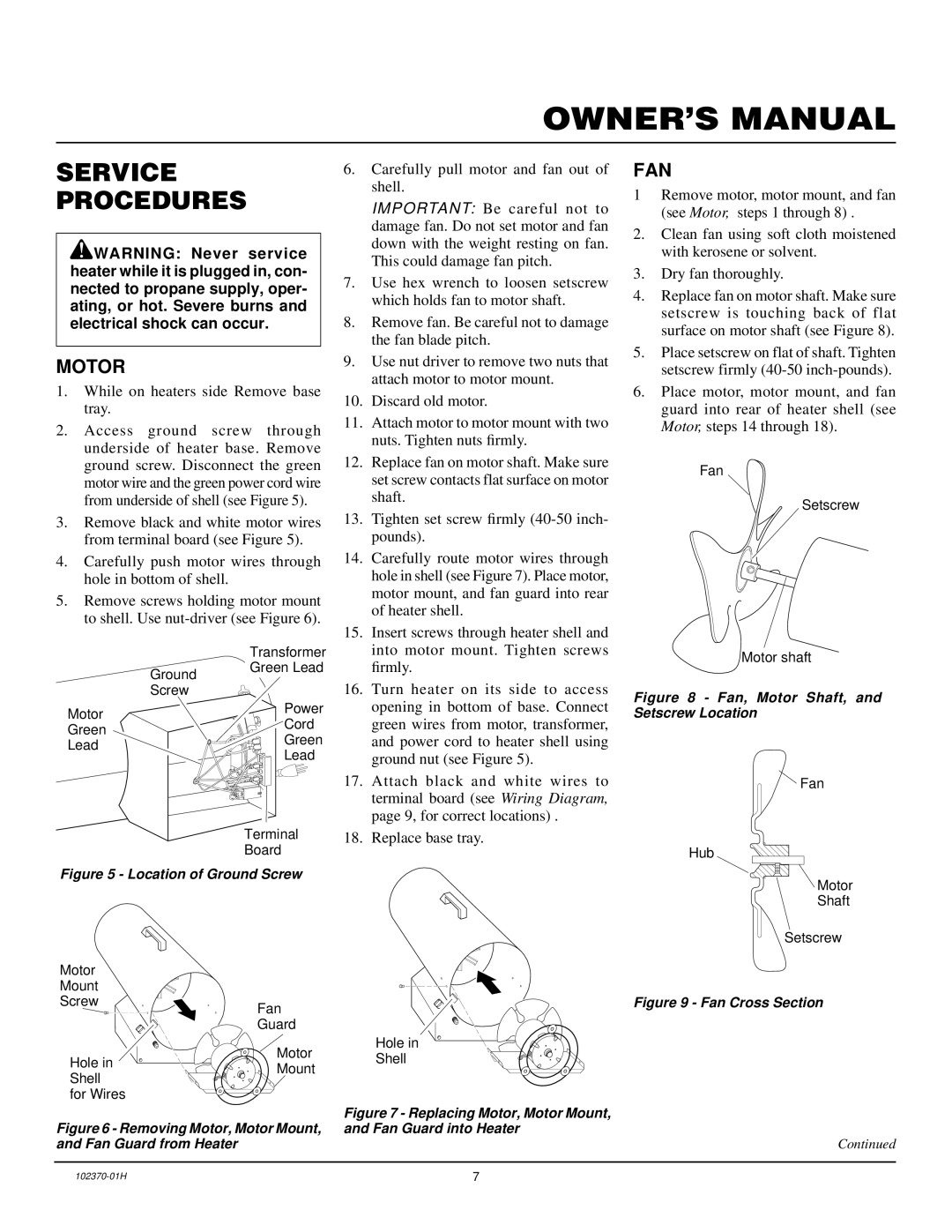PROPANE CONSTRUCTION HEATERS specifications
Desa propane construction heaters are an essential tool for contractors and builders, especially during cold weather conditions, providing a reliable and efficient heating solution on job sites. Known for their robust construction and advanced features, these heaters ensure that projects remain on schedule without the distractions of cold weather.One of the standout features of Desa propane heaters is their portable design, making them easy to transport and position wherever heat is needed. This mobility is crucial on construction sites where workspaces are often changing and vary in size. Desa offers a range of models with varying heat outputs, allowing users to select the right heater based on the specific requirements of the job site.
These heaters utilize propane gas as their primary fuel source, allowing them to deliver immediate heat without the need for cords or electrical connections. This characteristic makes them particularly valuable in outdoor settings or in areas where electricity access is limited. Furthermore, propane is generally more cost-effective than electricity for heating large areas, thus providing significant savings over time.
Desa construction heaters also feature advanced safety mechanisms. Many models are equipped with built-in safety shut-off systems that activate in the event of low oxygen levels or overheating, ensuring a safe working environment. Additionally, the heaters often come with adjustable heat settings, allowing users to tailor the output to their specific needs, whether they require a gentle warmth or a robust heating solution.
The construction of Desa propane heaters is designed for durability. Made from high-quality materials, these heaters can withstand the rigors of outdoor use and resist corrosion and impacts. The stainless steel burners are designed for longevity and optimal performance, providing consistent heat generation over extended periods.
In terms of technology, most Desa propane heaters include features such as a thermostat for temperature regulation and a fan-forced design that distributes heat evenly across larger areas. This ensures that workers are kept comfortable, which can boost productivity and morale on the job site.
By choosing Desa propane construction heaters, contractors invest in a versatile and efficient heating solution that meets the demanding needs of construction projects. With their combination of portability, safety features, and durable design, Desa heaters stand out as a reliable choice for anyone looking to maintain a productive work environment in challenging weather conditions.

